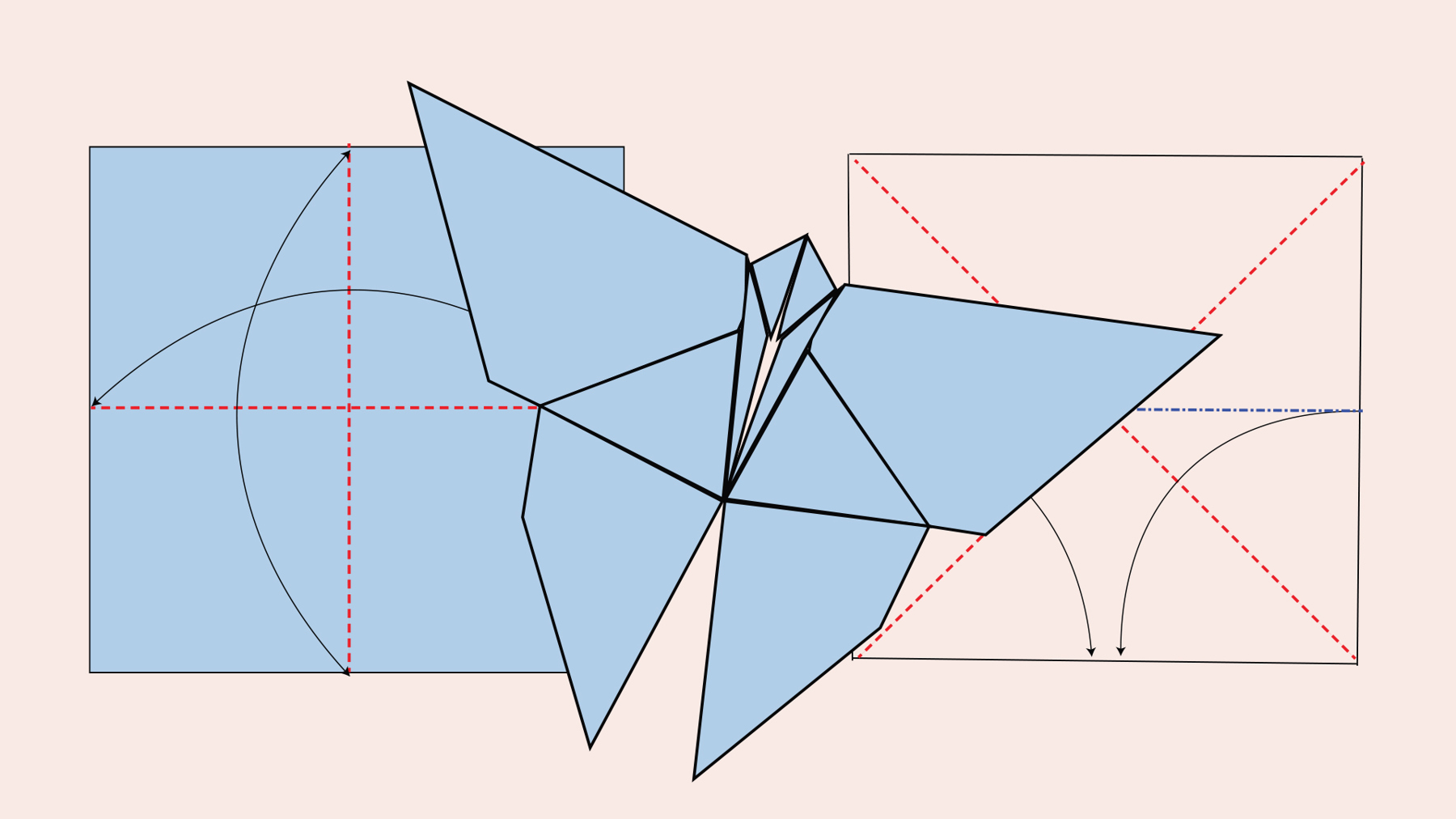A moment of calm
Find out how the ancient art of origami can encourage a sense of calm and concentration, then have a go at folding your own – with a special design inspired by the large blue butterfly

Origami is the art of transforming paper into a sculpture by folding, usually without a pair of scissors or glue stick in sight. Its history is a bit of a mystery. It’s likely that people were folding other materials (like cloth) before paper was invented, but paper originated in different places at different times.
We think paper folding probably began in China or Japan. There’s evidence of it around 1000CE: origami butterflies represented the bride and groom during Shinto weddings, Samurai warriors gave gifts decorated with paper folded into noshi (good luck tokens), and Chinese funerals involved burning paper folded into yuanbao (golden currency). Beyond a few mentions, though, much of its ancient history has been lost (or was never recorded in the first place).
One of the reasons origami’s stuck around is because people have found new ways to share their ideas and patterns. One of the earliest paper folding instruction books we know about was written in 1797; since then, several key players have helped make sure it’s remained popular.
Now it’s easier than ever to get stuck in. A quick online search brings up thousands of instructions. There’s something for everyone – from a simple penguin to intricate plants made from lots of sheets slotted together. It’s up to you whether you focus on learning a few models by heart or try something new each time.
Origami’s great for hand-eye coordination and fine motor skills (the fancy way of saying ‘using information from your eyes to guide your hands’ and ‘using the little muscles in your hands and wrists’), which are essential for school and everyday life.
It’s also a fun way to practise problem solving. Trial and error are folders’ friends, and making a mistake isn’t a big deal. The key to origami is taking a deep breath, flattening out the paper, and trying a different technique.
Origami can also boost wellbeing. It’s used in both prisons and therapeutic settings as a positive coping skill. In one prison in America, prisoners folded 1,000 cranes for a peace memorial, while in Norfolk, a man spent his sentence crafting a swan from 2,500 folded prison forms.
It’s soothing to focus on the feelings of smooth paper and crisp folds under your fingers; origami helps people to slow down and ground themselves in the moment, and gives them the chance to learn from mistakes.
Some people even use origami as a form of ‘focused attention’ meditation. It also gives people the chance to have control over something and achieve things – models may seem small, but they can do a lot to boost someone’s self-esteem.
Origami’s a really flexible activity to slot into your programme. Of course, it’s an obvious choice for Team Leader Challenge Awards and Creative and Artist Activity Badges, but it can also bring people together at the start of a meeting or help them calm down after a hectic game.
Paper folding’s also a great thing to have on hand for any unexpected gaps. It doesn’t matter if you’re in your meeting place or halfway through a hike – all you need is paper (or the tinfoil from your sandwiches).
How to make a traditional origami butterfly
Mountain folds and valley folds
When the page is laid flat, mountain folds raise up from the paper, like a mountain. Valley folds appear to sink back into the paper, like a valley.
- Valley fold and unfold along lines shown.
- Valley fold and unfold from corner to corner through the center.
- Mountain fold along the lines made in step 1, down towards the bottom edge.
- This will form a triangle.
- Rotate the model 180° and valley fold the top flaps down to bottom point.
- Flip the entire model over.
- Valley fold the bottom point up above the top edge. Fold through all the layers.
- Fold the top right layer down. The right corner won’t lie flat, but press it down to form the fold. See next step for final position.
- Repeat step 8 on left layer.
- Fold entire model in half through the centre line.
- Valley fold the wing up along line shown. Repeat on opposite wing.
- Fold the top triangle down to form the head and complete your butterfly.
Did you know?
59 is the number of butterfly species in the UK
5 butterfly species have become extinct in the last 150 years
75% of British butterfly species are in decline
4 is the number of its life stages: egg, caterpillar, chrysalis, butterfly